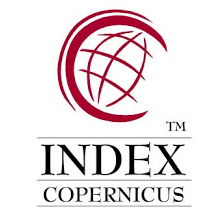RECUPERAÇÃO SUSTENTÁVEL DE LÍTIO A PARTIR DE BATERIAS DE ÍON DE LÍTIO: UM ESTUDO COMPARATIVO DE TÉCNICAS PIRÔNICAS E HIDROMETALÚRGICAS
SUSTAINABLE LITHIUM RECOVERY FROM LITHIUM-ION BATTERIES: A COMPARATIVE STUDY OF PYRO AND HYDROMETALLURGICAL TECHNIQUES
DOI:
https://doi.org/10.51473/rcmos.v1i2.2024.785Palavras-chave:
Lithium-ion batteries, pyro and hydrometallurgical processes.Resumo
Different sort of Batteries are used in many diversified applications such as cars, radios, laptops, mobile phones, and watches. They are classified as primary and secondary batteries. The former one is known as alkaline batteries made up of zinc and manganese as primary source and mainly used for household purposes, which convert directly chemical energy into electrical energy. The later one is usually made up of nickel (Ni), cadmium, nickel metal hydride or lithium-ion and it is mainly used in mobile phones, electronic items, cameras etc. The main concern of using batteries is the threat to the environment at the end of their usages. Among all type of batteries, Lithium-ion batteries (LIBs) are gaining world-wide interest owing to their use in almost all modern life devices. In addition, it is of paramount importance to develop new technologies to minimize any environment impact caused while disposing of such heavy metal bearing residues, since, on the one hand, the metals they contain can affect the environment and, on the other hand, such metals are valuable at an industrial level. In this work, the recoveries of lithium and manganese from the cathodes of exhausted lithium-ion batteries will be investigated using a pyrometallurgical chlorination process, followed by a hydrometallurgical process for the proper solubilisation of the lithium, manganese and cobalt chlorides formed. The tests were carried out in isothermal conditions, in alumina reactor so that it will be possible to operate in corrosive atmospheres. The effect of temperature and reaction time on lithium, manganese and cobalt extractions were also considered. The reagents, products and solid residues of chlorination were characterized by atomic absorption spectrometry (AAS) and X-ray diffraction (XRD). The experimental results were be analysed to assess the efficiency of lithium, manganese and cobalt extractions as LiCl, MnCl2 and CoCl2, respectively. Once these metals were solubilized, lithium was precipitated in the form of carbonate, which is the raw material for the subsequent production of the batteries.
Downloads
Referências
- Ballon, Massie Santos (14 October 2008). “Electrovaya, Tata Motors to make electric Indica”. cleantech.com. Archived from the original on 9 May 2011. Retrieved 11 June2010.
”Memory effect now also found in lithium-ion batteries”. Retrieved 5 August 2015.
-Mauger, A; Julien, C.M. (28 June 2017). “Critical review on lithium-ion batteries: are they safe? Sustainable?” (PDF). Ionics. 23 (8): 1933–1947. doi:10.1007/s11581-017-2177-8. S2CID 103350576.
- Jump up to:a b Mark Ellis, Sandy Munro (4 June 2020). Sandy Munro on Tesla’s Battery Tech Domination (video). E for Electric. Event occurs at 3:53–5:50. Retrieved 29 June 2020 – via YouTube.
^ Eftekhari, Ali (2017). “Lithium-Ion Batteries with High Rate Capabilities”. ACS Sustainable Chemistry & Engineering. 5 (3): 2799–2816. doi:10.1021/acssuschemeng.7b00046.
Hopkins, Gina (16 November 2017). “Watch: Cuts and dunks don’t stop new lithium-ion battery - Futurity”. Futurity. Retrieved 10 July 2018.
Chawla, N.; Bharti, N.; Singh, S. (2019). “Recent Advances in Non-Flammable Electrolytes for Safer Lithium-Ion Batteries”. Batteries. 5: 19. doi:10.3390/batteries5010019.
Yao, X.L.; Xie, S.; Chen, C.; Wang, Q.S.; Sun, J.; Wang, Q.S.; Sun, J. (2004). “Comparative study of trimethyl phosphite and trimethyl phosphate as electrolyte additives in lithium ion batteries”. Journal of Power Sources. 144: 170–175. doi:10.1016/j.jpowsour.2004.11.042.
Fergus, J.W. (2010). “Ceramic and polymeric solid electrolytes for lithium-ion batteries”. Journal of Power Sources. 195 (15): 4554–4569. Bibcode:2010JPS...195.4554F. doi:10.1016/j.jpowsour.2010.01.076.
Liu et al., Understanding electrochemical potentials of cathode materials in rechargeable batteries, Materials Today, Volume 19, Number 2, March 2016.
Downloads
Arquivos adicionais
Publicado
Edição
Seção
Categorias
Licença
Copyright (c) 2024 Andriela Dutra Norberto de Oliveira, Armando Lucas Cherem da Cunha, Luis Gonzaga Santos Sobral, Isaías Vieira Junior (Autor/in)

Este trabalho está licenciado sob uma licença Creative Commons Attribution 4.0 International License.
Este trabalho está licenciado sob a Licença Creative Commons Atribuição 4.0 Internacional (CC BY 4.0). Isso significa que você tem a liberdade de:
- Compartilhar — copiar e redistribuir o material em qualquer meio ou formato.
- Adaptar — remixar, transformar e construir sobre o material para qualquer propósito, inclusive comercial.
O uso deste material está condicionado à atribuição apropriada ao(s) autor(es) original(is), fornecendo um link para a licença, e indicando se foram feitas alterações. A licença não exige permissão do autor ou da editora, desde que seguidas estas condições.
A logomarca da licença Creative Commons é exibida de maneira permanente no rodapé da revista.
Os direitos autorais do manuscrito podem ser retidos pelos autores sem restrições e solicitados a qualquer momento, mesmo após a publicação na revista.













